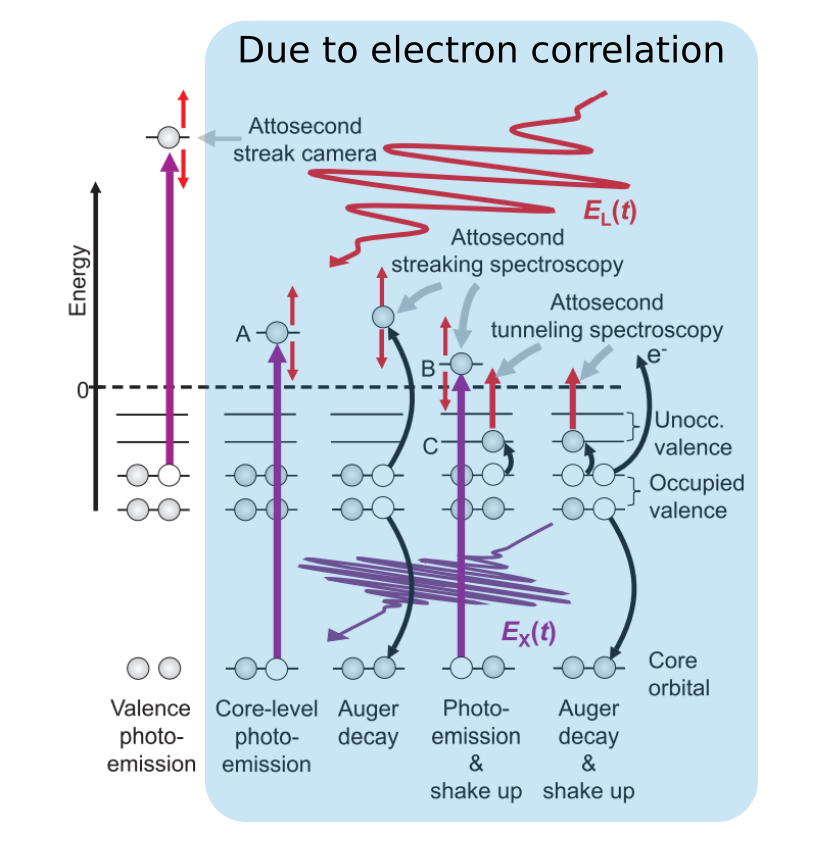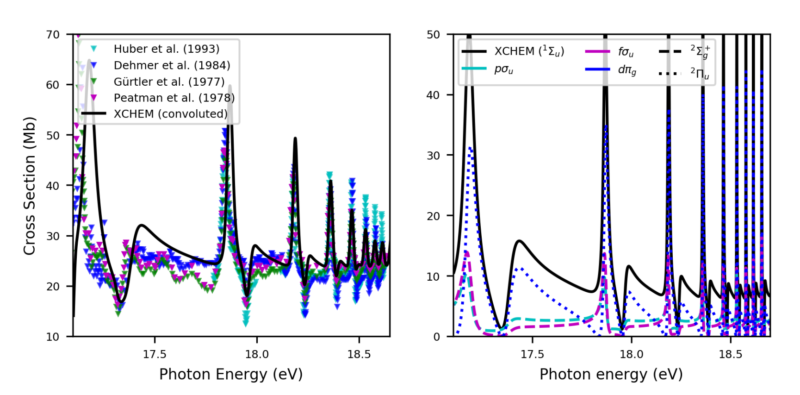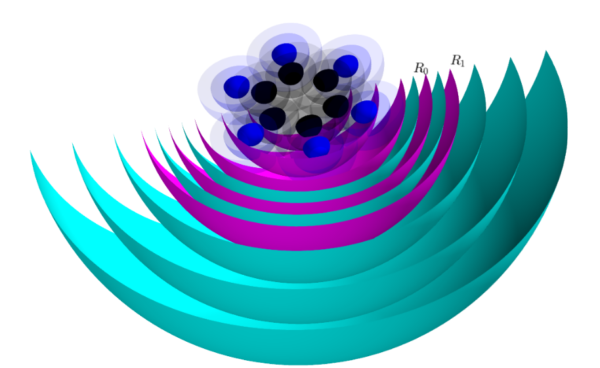WHAT IS XChem?
XChem package compiles a set of computational tools able to provide a full quantum mechanical description of molecular ionization in the time domain by including both electronic and nuclear degrees of freedom. The used approach has provided reliable predictions and has opened the way to new applications in emerging scientific disciplines, as attochemistry, single molecule imaging, coherent attosecond control of chemical reactions, etc.
XCHEM is a solution for an all-electron ab-initio calculation of the electronic continuum of molecular systems. XCHEM combines the tools of quantum chemistry (as implemented in Molcas) and scattering theory to accurately account for electron correlation in the single-ionization continuum of atoms, small and medium-size molecules.
The validity of the XChem approach has been demonstrated, among others, in publications (1), (2) and (3) listed below.
A detailed description of XChem potential applicability in chemistry and biology can be found in a recent review article arising from the XCHEM project.(4)


Krausz and Ivanov Rev. Mod. Phys. 81, 163 (2009).
XChem Applications
It is designed to study molecular photoionization involving multichannel scattering problem.
It is used to
What can XCHEM do?
XCHEM can compute:
What can XCHEM be used for?
XCHEM is a valuable tool for:

Figure 1: Photoionization cross section of N2 obtained with XCHEM. Left: total cross section compared to experiment (J .Phys. Chem. Lett. 2018, 9, 756-762). Right: Partial cross sections for different symmetries of the molecule before and after ionization and the ejected electron (Phys. Rev. A 98, 033413).
Who is XCHEM for?
XCHEM is a valuable tool for:
XChem Approach and Features
XChem, at its core, lies a close coupling expansion combined with the use of
This approach yields the scattering states of the molecular system via the eigenstates of the close coupling matrix (CCM). While useful in their own right, the full potential lies in using the close coupling matrix as a starting point for time dependent calculations. Doing so, one may explicitly model the interaction of molecules with ultrashort (attosecond) pulses. The extreme band widths of such pulses lead to the coherent excitation of multiple ionization channels, whose coupling (accurately described in XCHEM) gives rise to complex phenomena.

Figure 2: Illustration of the XCHEM basis architecture in benzene. Cyan: B-splines, mangenta: Gaussians at the center of mass of the molecule, blue and black: Gaussians at the atomic sites not overlapping with B-splines.
An attractive feature of XCHEM is that the architecture of the basis functions (Fig. 2) and the use of Molcas allow one to describe the electronic continuum of medium-size molecules at the same level of theory as multi-configurational SCF methods (CASSCF, RASSCF) do for the ground and the lowest excited states of such molecules. At present the largest systems treated have of the order of ten atoms.
Relevant Publications
Do have a question ?
SIMUNE Team is happy to provide support and solution for your problem.
Would like to try ASAP trial?
Make a request.



